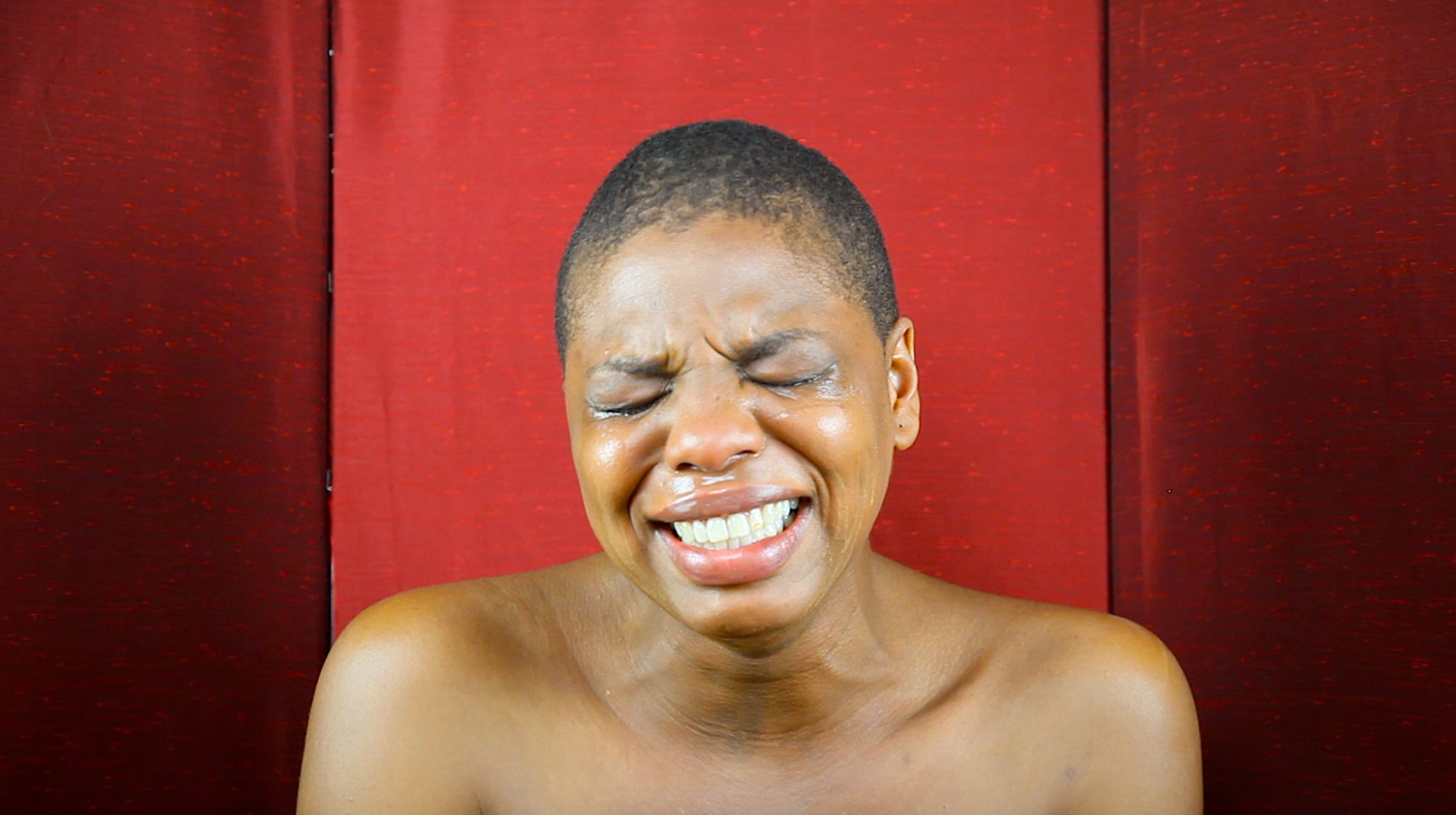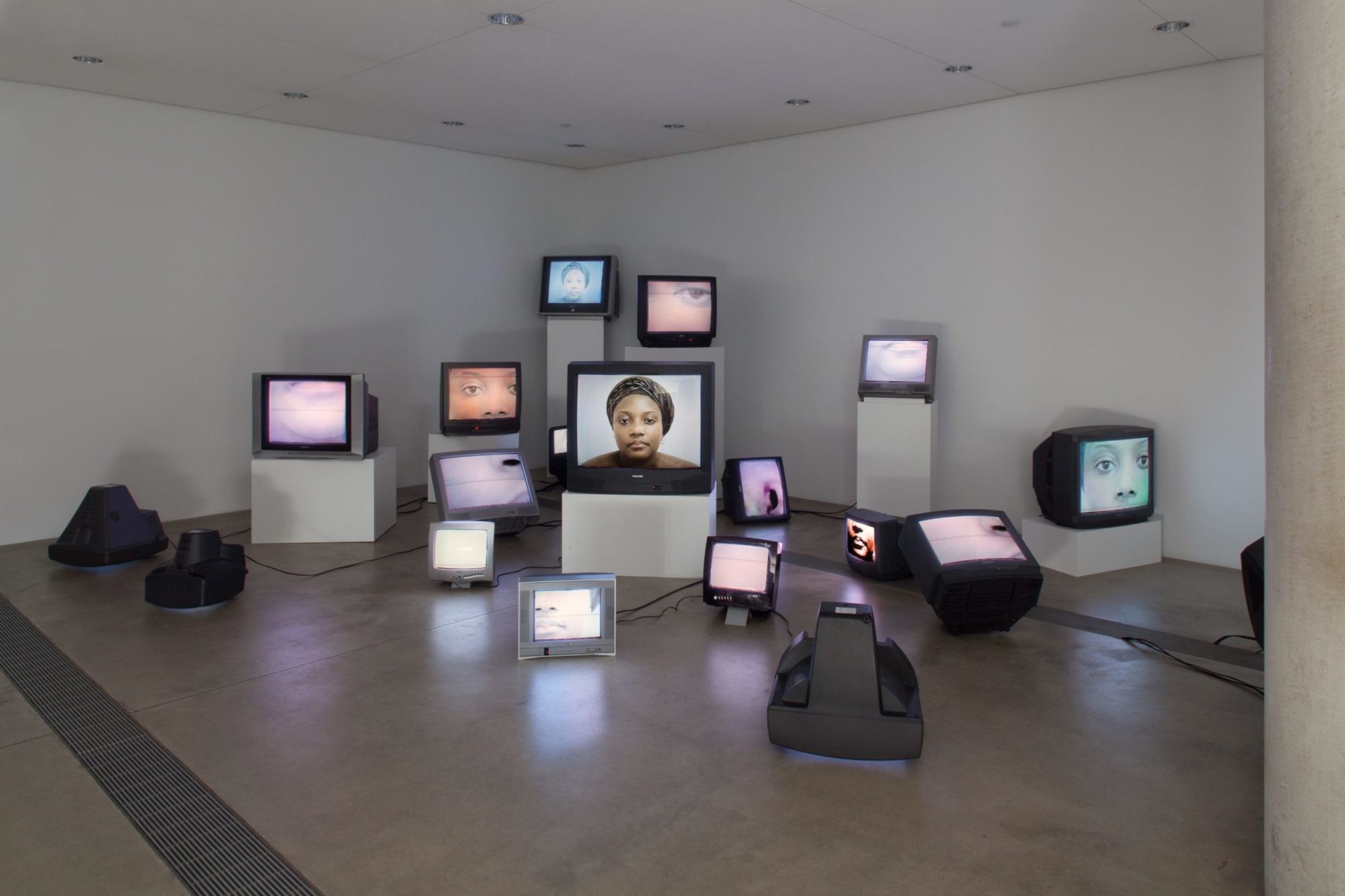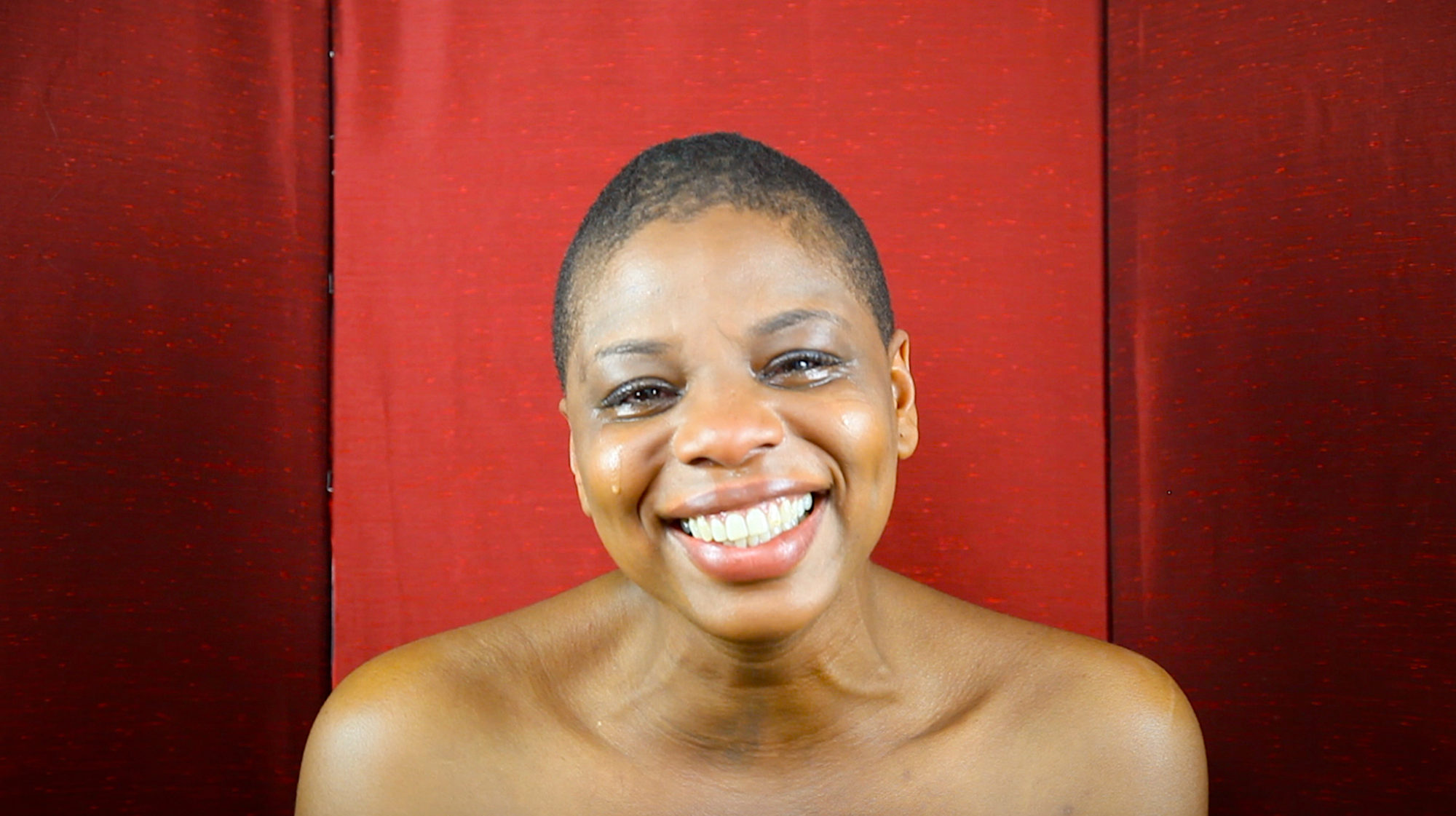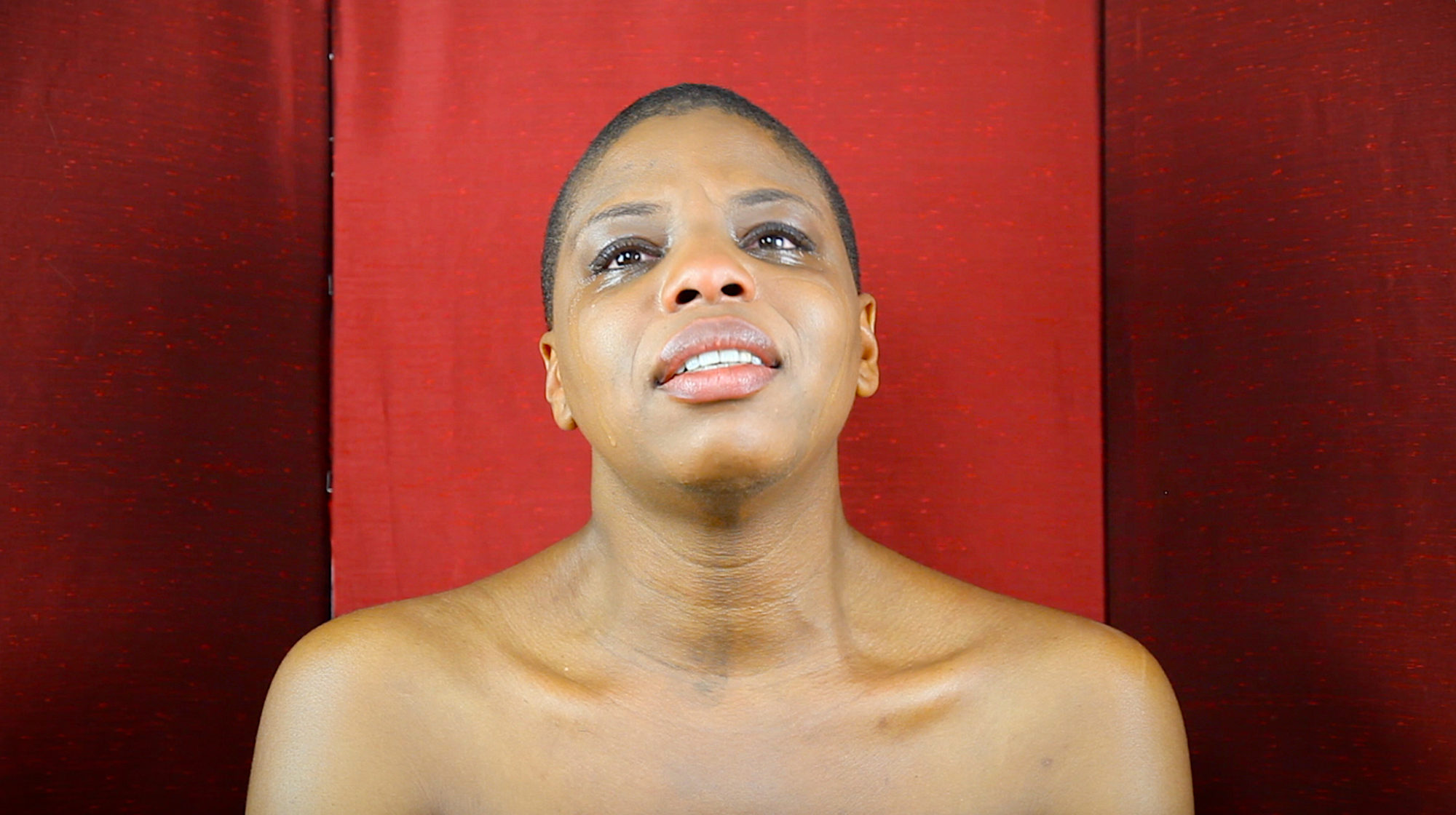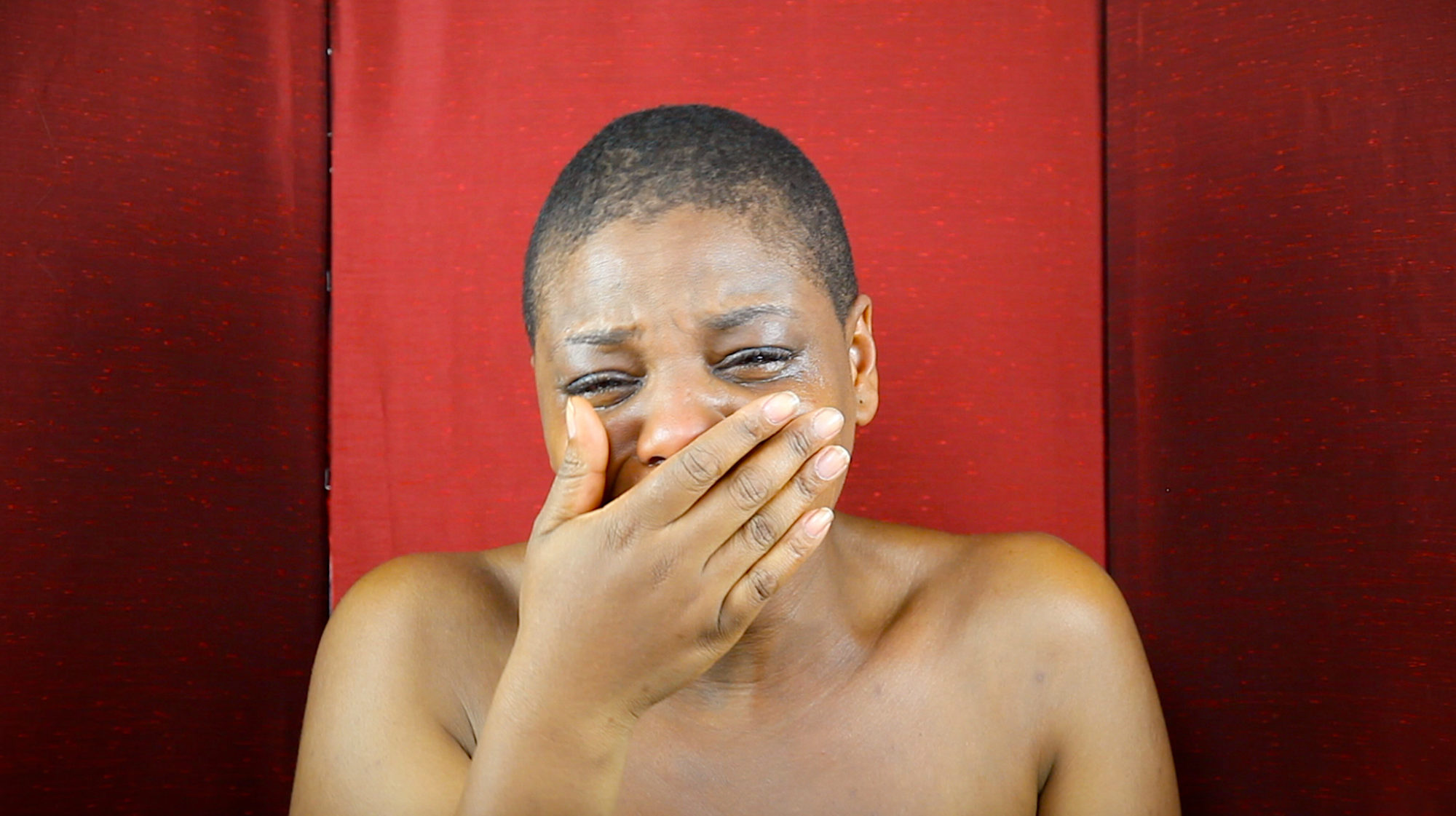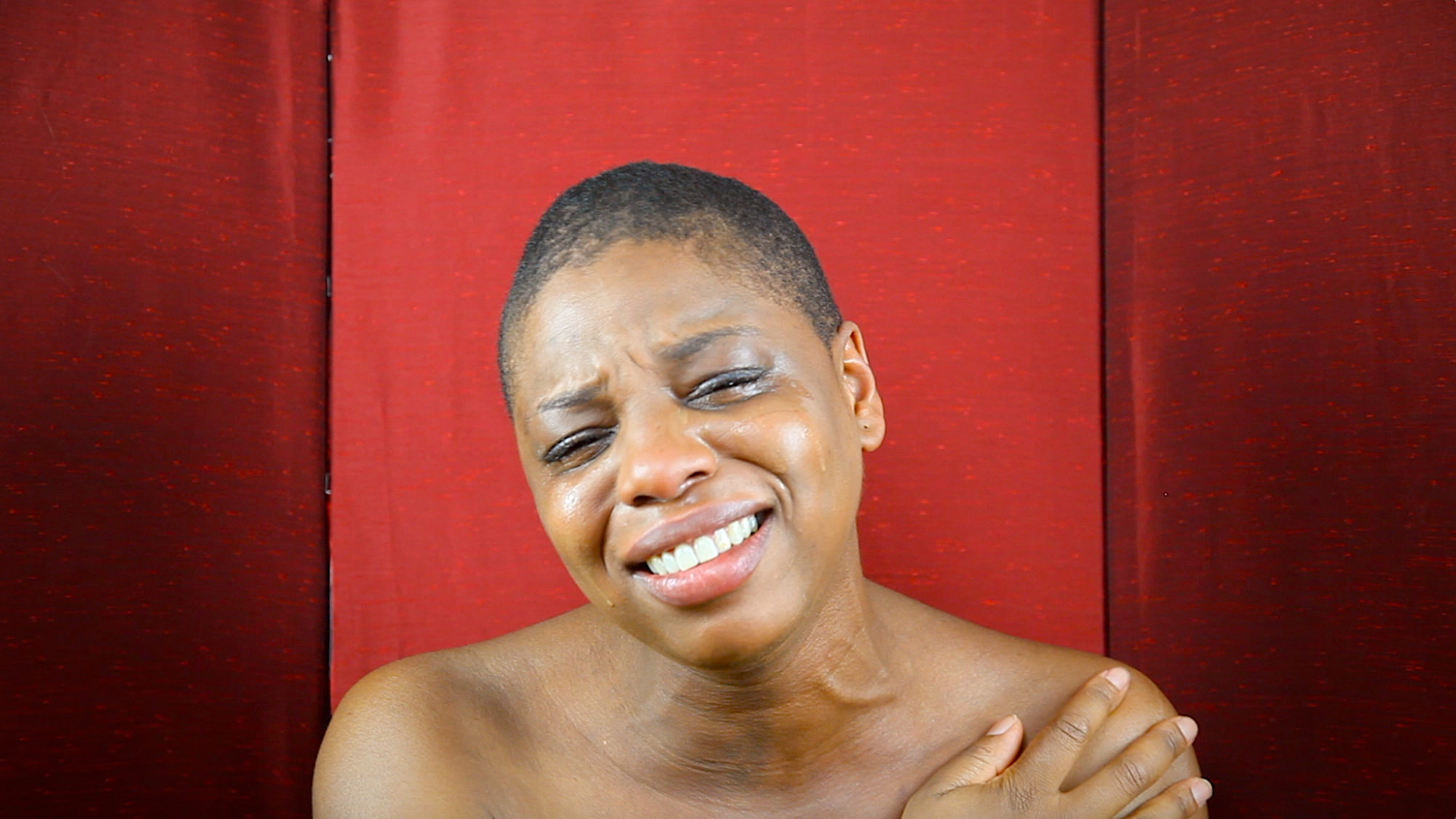Zina Saro-Wiwa
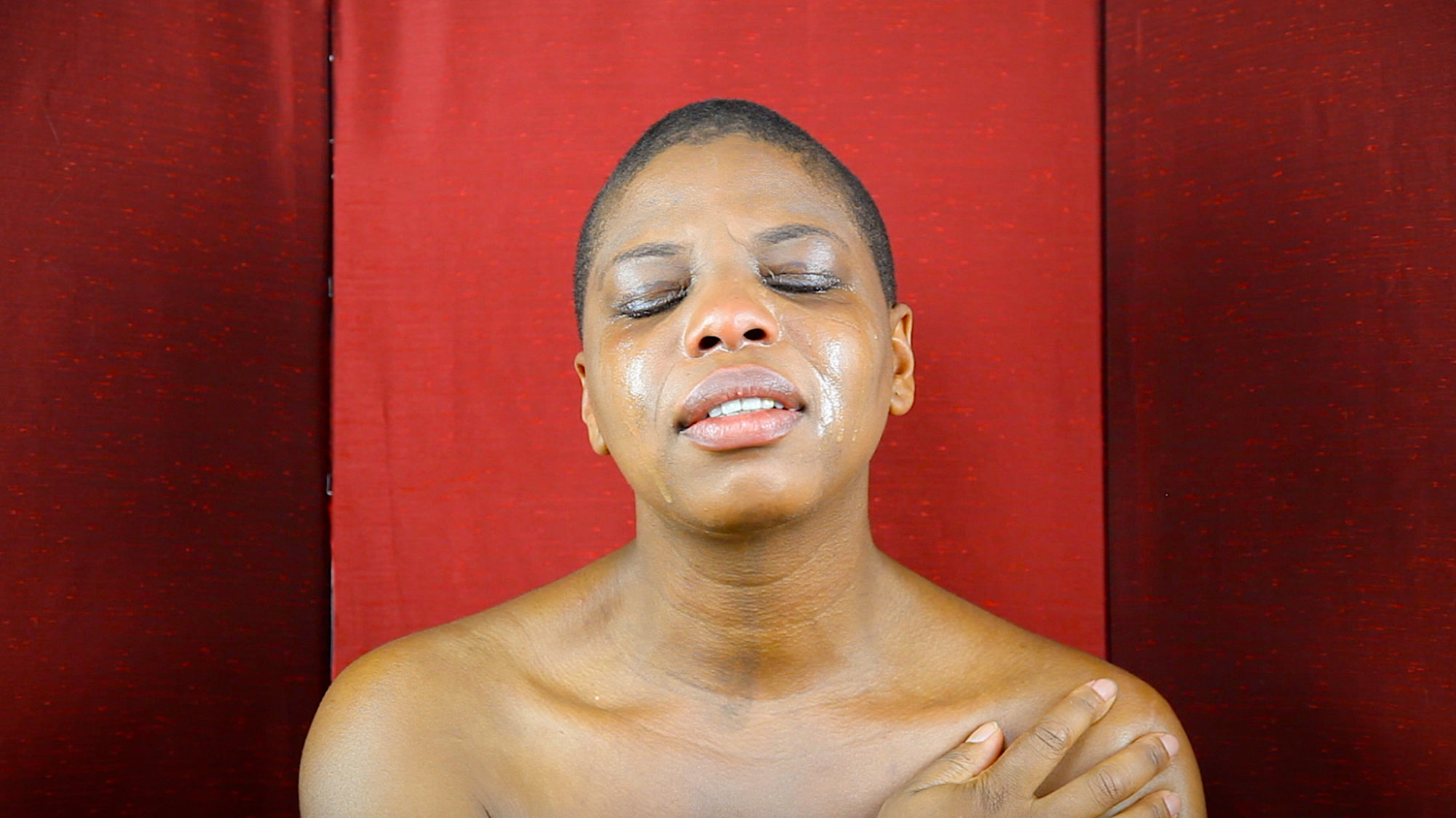
Zina Saro-Wiwa, Mourning Class: Nollywood, 2010 [photo: Sam Fentress; courtesy of the artist and Pulitzer Arts Foundation, St. Louis]
Share:
British–Nigerian video artist and filmmaker Zina Saro-Wiwa depicts women as wandering states. Sensing a path through emotional matter, the artist presents Nigerian women—including herself—as creatures fixed upon the purge of sorrow. Saro-Wiwa’s video installation Mourning Class: Nollywood (2010) portrays the performance of pain in Nigerian cultural settings, in traditional and contemporary senses. In this presentation of mourning rituals Saro-Wiwa illuminates the practice of public grieving. For the series, she asked popular Nollywood actresses to sit before the camera and produce real tears when prompted. In a contrived restaging of mourning, the artist draws upon Nollywood film-style close-up shots of characters suffering some plight, expressed in prolonged states of inexplicable weeping. The women are unified by their sadness. They cry intensely, while maintaining eye contact with the camera lens, entangling the witness in a stranger’s performed state of sorrow. Exhibited in North America and Europe but yet to be exhibited in Nigeria, this work harks back to Nigerian traditional funeral practices, which, historically speaking, often center on the performance of pain. Funeral proceedings among Yoruba, Igbo, and other Nigerian communities have laid much emphasis on public mourning. In Nigerian settings, aggrieved widows are bestowed the duty of wailing—on cue—for their beloved during funeral proceedings as a declaration of love or to attest the widow’s innocence.
In Sarogua Mourning (2011) the artist investigates the relationship between performance and catharsis. For renowned Nigerian essayist and playwright Wole Soyinka, the process of catharsis rests within “a chthonic realm, a storehouse for creative and destructive essences.”1 Posing a multilevel experience that breaches the mystical and underworldly grounds human emotions are known to journey to in love and loss, the work serves as the artist’s confrontation with her inability to mourn her father, legendary environmental and human rights activist Ken Saro-Wiwa. At once a public hero and enemy of the Nigerian state, the activist was later sentenced to death during the military dictatorship of General Sani Abacha in 1995. Zina Saro-Wiwa describes the context of Sarogua Mourning:
I did not cry for ten years after my father was killed. I found his very public death difficult to mourn partly because his legacy and story belonged to the wider world and not to me, but also due to a profound dissatisfaction with the Western mourning rites I found myself having to draw on at the time of his death and the death of my younger brother before him.
Zina Saro-Wiwa, Sarogua Mourning, (still), 2010 [photo: Sam Fentress; courtesy of the artist and Pulitzer Arts Foundation, St. Louis]
Zina Saro-Wiwa, Sarogua Mourning, (still), 2010 [photo: Sam Fentress; courtesy of the artist and Pulitzer Arts Foundation, St. Louis]
In this work, the artist takes on the role of professional mourner, with her head shaved, enacting a mourning performance for the camera. The artist appears to be undressed. She sheds herself of emotion for the viewer’s gaze. The work serves as a confessional and transformative mode of healing, assuaging the griever of deep-rooted distress. Tears stream down the artist’s face as she struggles to exhale. She intermittently obscures her face with her hands. Although her gestures cover her expression, her emotion is nevertheless exposed. She is wrought from within. Saro-Wiwa’s Sarogua Mourning is an unnerving and poignant work. Its title comes from the artist’s research into pre-colonial Ogoni deities. Sarogua is believed to have served as a rain god and also a war deity. A dialectic is formed between the contrasting forces at work within Sarogua, who is known to meet conflict through war, but also acts as a cleansing force in nature as rain. For the case of this work, an aggrieved Saro-Wiwa finds her caged emotions transmitted and unbound. The artist’s father, Ken Saro-Wiwa, invoked the same deity in a poem he wrote titled For Sarogua, which describes Sarogua’s “washing away pain” and “cleansing showers.” Zina Saro-Wiwa discovered the poem after she named Sarogua Mourning. Beyond Ogoni belief systems, and in Yoruba cosmology in particular, tragic feeling stems from knowledge of a foray into a psychic abyss of re-creative energies. Through tears, pain, and laughter in Sarogua Mourning, festered emotion is at first a problem, until it becomes the vital force aiding the process of healing.
The artist’s work is often framed to emphasize its examination of emotion. Situating artistic discourses within personal planes, the artist’s earlier works mark the loss—and what remains—of a daughter’s father. Surpassing the personal, Saro-Wiwa’s work also communicates the social, political, ecological, and economic plight of communities within the Niger Delta, furthering the artist’s conversations about personhood and community. In recent years, narratives of devastation, violence, and failure have gained visibility under highly public outings. The Nigerian photographer George Osodi is revered for capturing the plunder of the Niger Delta in a most arresting light. Countering the literal and haunting backdrops of Osodi, Zina Saro-Wiwa commits instead to the Niger Delta’s less visible ecosystems, revealing a more woeful and meditative engagement with the region. In the video triptych The Invisible Man: The Weight of Absence (2015), the artist upends the traditional mode of performing masquerade. In Ogoniland masks are used to reference farming, to make political statements, and for entertainment. Saro-Wiwa engages with masquerade to seep within and uncover emotional terrains. She explains, “The Invisible Man is about a fear of mine, a burden I have carried. Men who have disappeared in my life or are hard to find.” Once again, personal narratives feature within her work, although it is well defined that this experience of absence is not hers alone. Nigerian women appear in this work in many, often similar, compositions, ones that evoke exhaustion, psychological or social disturbance, vacancy, sadness, and are ubiquitously silenced by the loss or remains of the men who were once in their lives.
Zina Saro-Wiwa, Mourning Class: Nollywood, 2010 [photo: Sam Fentress; courtesy of the artist and Pulitzer Arts Foundation, St. Louis]
The work’s significance is broadened because black women are so often depicted suffering, whether from lack of opportunity, from being frequently held back by patriarchal forces or wider economic insecurities. Nigeria’s former minister for women’s affairs and social development Hajiya Zainab Maina, expressed that “70% of Nigerian women live below the poverty line.”2 Betty Abah, the executive director of the Centre for Children’s Health, Education, Orientation, and Protection and an environmental activist, says that although women throughout Nigeria face entrenched cultural inequity, women of the Delta “suffer a higher level of physical, social, and economic degradation.”3 Niger Delta women, she says, are “generally invisible, and the least to be considered for jobs or crumbs from the communities.”4 In consideration of the plight of Nigerian women as mothers, wives, daughters, sisters, and concubines, and in other vulnerable contexts, the artist creates a space for the reinterpretation of which communities may constitute the invisible in Nigerian settings.
Zina Saro-Wiwa, Sarogua Mourning, (still), 2010 [photo: Sam Fentress; courtesy of the artist and Pulitzer Arts Foundation, St. Louis]
Zina Saro-Wiwa, Sarogua Mourning, (still), 2010 [photo: Sam Fentress; courtesy of the artist and Pulitzer Arts Foundation, St. Louis]
The Niger Delta region comprises 185 of the 774 local government areas and covers 9 out of Nigeria’s 36 states: Abia, Akwa Ibom, Bayelsa, Cross River, Delta, Edo, Imo, Ondo, and Rivers. According to a 2006 census, the region is home to more than 30 million people, over 23% of Nigeria’s population.5 The Niger Delta contains vast reserves of oil and gas, which have played an integral role in the rise and fall of Nigeria’s economy for decades, accounting for 10% of the country’s gross domestic product, and 83% of its total export revenue.6 Greed and mismanagement of the country’s abundant natural resources have been at the root of economic violence, carried out through several forms of neglect and underdevelopment. In 1959 Shell Petroleum Development Company discovered oil in Ogoniland, at a town called Bori, where the company eventually built a flow station and “for decades, Shell and other multinational corporations have directly contributed to the devastation of the land and livelihoods of the people who live in the Niger Delta,”7 says Osai Ojigho, director of Amnesty International Nigeria. Local communities have not benefitted from the wealth extracted from the region. Numerous oil spills and gas flaring have ruined the lands and waterways; approximately 3,000,000 barrels of oil have spilled in the Niger Delta due to the 6,817 oil spills that occurred between 1976 and 2001.8 The delta is now defined by poverty, economic underdevelopment, inequality, and environmental degradation. Historical tensions and a proliferation of armed groups—militant, criminal, and ethno-sectarian—have created a climate of confusion, violence, and instability in a region endowed with greater potential. Words from the prolific Nigerian writer Christopher Okigbo’s poetry serve as a lament for what has been and what could be in the Niger Delta:
The wailing is for the fields of men:
For the barren wedded ones;
For perishing children …
The wailing is for the Great River
According to political scientist Jean-Francois Bayart, the state is a major manufacturer of inequality. Bayart infers that one’s position in the state apparatus also determines one’s social status, relationship to the economy, and one’s material power.9 For Zina Saro-Wiwa, art provides “powerful and essential tools for researching and sharing our history as well as imagining our future.” She believes that “creative industries create an interesting opportunity to transcend your sense of self.” Saro-Wiwa’s true meaning is often impenetrable, though her words can be applied to the personal explorations in her work and, equally, to the efficacy of art as a force for positive social change; development; and the rethinking of social, physical, emotional, and mental environments. In commenting on her commitment to Nigeria’s burgeoning artistic environment, the artist argues that “dominated people can reinvent the world around them as well as create new economies.” Her work is evidence that “a healthy and vigorous creative environment is essential for social change.” She further explains that there is more work to be done:
Tangling with our history is some of the most important work we can do right now in Nigeria as we have a super unengaged relationship with it. But artists, when inspired, can go places and create projects, objects and visions that bring history to life in exciting multi-dimensional ways. Perhaps the [artist’s] research work is not as thorough as the professional historian but there are other valuable things that artists bring to the table especially in terms of visualisation.
Zina Saro-Wiwa, Sarogua Mourning, (still), 2010 [photo: Sam Fentress; courtesy of the artist and Pulitzer Arts Foundation, St. Louis]
With that in mind, Zina Saro-Wiwa founded Boys’ Quarters Project Space, which displays work by local Niger Delta artists, as well as national and international ones. The space offers a conceptual and critically engaged intervention into Port Harcourt’s visual art scene. The works commissioned and shown through Boys’ Quarters facilitate new kinds of imagery by underrepresented artists, promoting home-grown reflections on Niger Delta inner life, in effect serving as a site for re-imagining the region.
Saro-Wiwa expresses how she would like to see the Niger Delta region in the not-so-distant future. Her vision is human-centered and harrowing. Her works highlight how Africa’s largest economy is still deprived of public goods and services, as well as the development needs that are yet to be tackled:
Clean air, water, pavements, well-stocked and staffed hospitals, ditto schools, safe and well-cared-for public green spaces, engagement with nature centred [on] the pursuit of leisure and contemplation, multiple arts institutions, thriving and inventive food culture. Great airports. Basic infrastructural improvements.
The Turquoise Meat Inside at Tiwani Contemporary in London—Saro-Wiwa’s first solo exhibition in Europe—included a new body of work that continues the artist’s examination of emotional landscapes, psychogeographies, and invisible ecosystems. It develops the artist’s commitment to research into the Niger Delta region of southern Nigeria, the artist’s birthplace. Representing Nigerian food traditions, folklore, and dance, the exhibition included works that examine and reimagine notions of environment and environmentalism. For Saro-Wiwa, “Art spaces support a form of free thinking that does not take place in governments. Anything can be used as a tool for art-making and I have always used food as part of the work that we do, either in my own practise as an artist or when we have shows at the gallery.” The artist reimagined Nigerian food and presented new dishes for the video’s subjects to consume. Saro-Wiwa said, of this gesture, “anything can be art. It is about how you think and how you present your meditations. It is about freedom. That is exactly the approach the country needs to move forwards.”
Emmanuel Balogun is a British-Nigerian writer, researcher, and filmmaker. His expertise lies within discourses concerning Sub-Saharan Africa and its diaspora. Fixed upon driving a dialectic between international development, art, and anthropology, he is concerned with employing artistic practice as a tool for realizing positive change. Balogun is also the founder of V I/Visual-Ideation.
References
| ↑1 | Wole Soyinka, Myth, Literature, And The African World. Cambridge [England]: Cambridge University Press. 2005. 41 |
|---|---|
| ↑2 | Orji Sunday, “In the Niger Delta, Women Cash in on a New Type of Oil Boom,” News Deeply , July 11, 2018, online. |
| ↑3, ↑4, ↑6 | Ibid. |
| ↑5 | PIND Foundation, Analysis Of Conflict Trends In The Niger Delta. 2018. PIND Foundation. online. |
| ↑7 | “New 360 Film Reveals Nigeria Oil Spill Devastation”. Jan 23, 2018. Aljazeera.Com. online. https://www.aljazeera.com/news/2018/01/360-film-reveals-nigeria-oil-spill-devastation-180123161406458.html. |
| ↑8 | UNDP | Niger-Delta Human Development Report Nigeria (2006), 76 |
| ↑9 | Jean-Francois Bayart, The State in Africa: The Politics of the Belly (Cambridge, MA: Polity, 1993), 21–22 |

